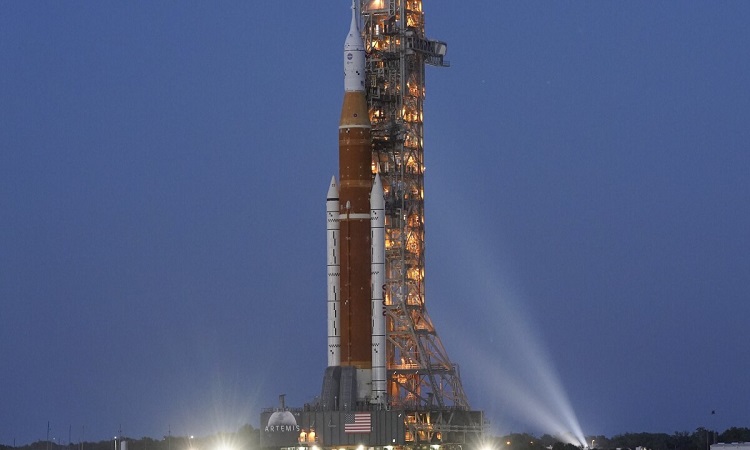NASA’s massive SLS rocket that’s tasked with sending humans back to the Moon is once again standing on its launch pad at Kennedy Space Center, Florida. The pitcher is being prepared to operate, it is hoped, his last wet dress rehearsal test after several technical problems.
The SLS (Space Launch System) rocket left its assembly building on Monday morning to travel the 6.4 kilometers to launch pad 39B. For this eight-hour long journey, the Crawler-Transporter 2 (CT-2) (NASA’s war machine) once again distinguished itself. The rocket was then hooked up to ground systems in preparation for yet another wet dress rehearsal which is expected to take place in about two weeks.
This marks the rocket’s second return to the launch pad, as NASA’s ground crew have already experienced three failed attempts. The first of these rehearsals was scheduled for April 1. It had been delayed due to technical problems preventing the crew from loading the rocket with fuel. During the second test, scheduled for April 11, the team had to deal with a faulty valve, leading engineers to modify the procedure. From then on, only the central stage, and not the upper stage, had to be loaded with cryogenic propellant. Finally, the third attempt on April 14 was marked by a leak of liquid hydrogen from the umbilical mast connecting the base of the mobile launcher to the central stage.
The beginning of the Artemis era
Since then, the huge 98-meter-tall rocket has remained in the vehicle assembly building while technicians and engineers worked to resolve all these technical problems. They tightened the seals on the umbilical connection in hopes of fixing the hydrogen leak. They also replaced the upper stage helium valve which had failed due to rubber debris stuck in the mechanism, among other repairs.
If the next dress rehearsal finally goes as planned, the rocket will once again return to its assembly building for final launch preparations. Its flight will mark the official start of the Artemis era which will attempt to bring humans back to the Moon.
The Artemis 1 mission will be an uncrewed mission, although mannequins will be on board to perform radiation exposure measurements. The objective will be to circumnavigate the Moon and return to Earth. Its launch is scheduled between August and September.




